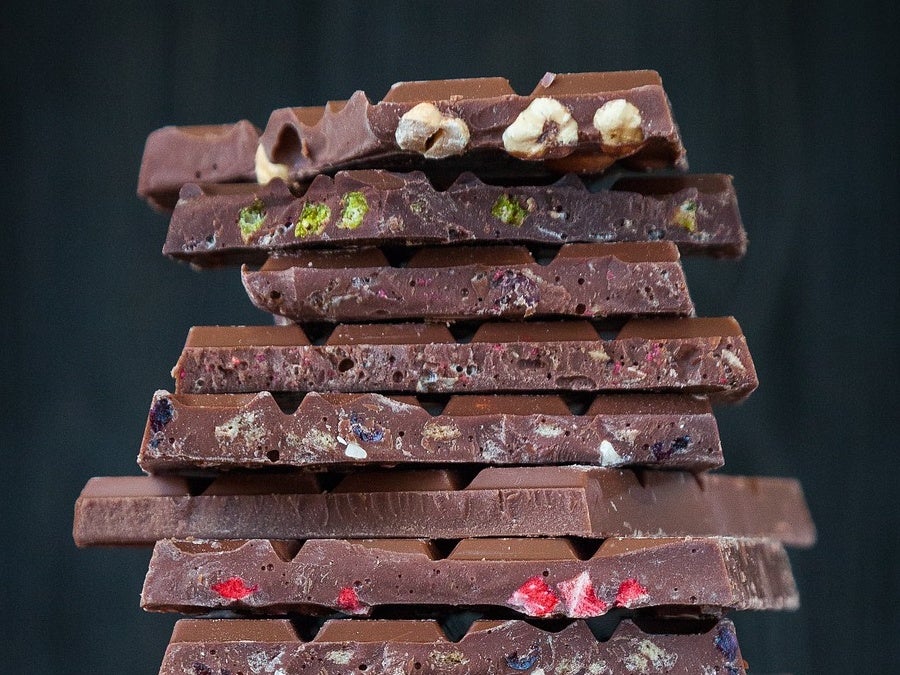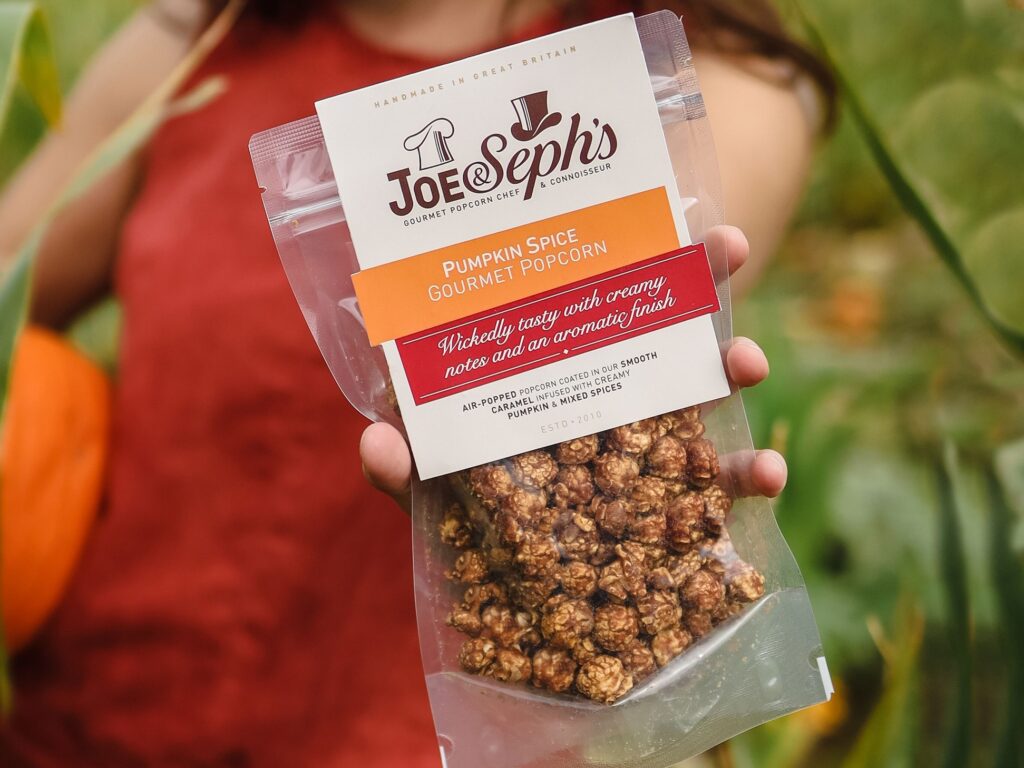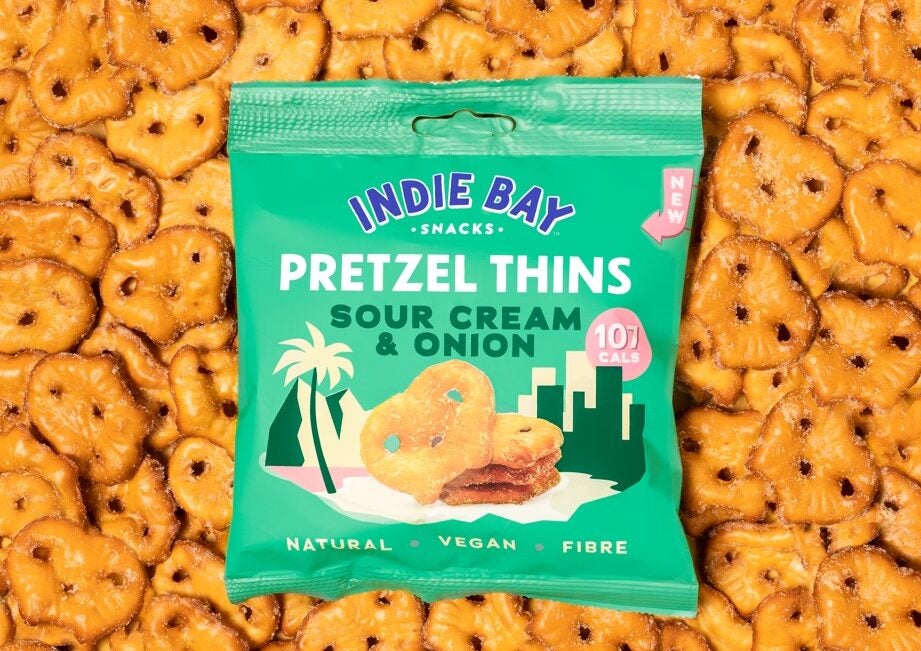
It is broadly accepted that in times of economic turmoil sales of small luxuries do not suffer too badly.
The “lipstick effect”, a term popularlised by Estée Lauder chairman Leonard Lauder, argues that small-ticket indulgences have some level of protection from tightening purse strings as people still try to treat themselves, even if they eschew big purchases.
But, as countries across the globe report record levels of food inflation this autumn, will the so-called lipstick effect continue? Which brands may escape the effects of economic turmoil and how can companies protect themselves from shrinking consumer budgets?
According to GlobalData research, 41% of consumers globally traded down to cheaper savoury snacks in the third quarter of 2022, whether within the same brand or moving to private label. For chocolate, confectionery and desserts, the proportion was 39%. The research and intelligence group, Just Food’s parent, surveyed more than 21,000 consumers.
Low price and high-quality products/ingredients were the top factors consumers listed when deciding whether both categories of snacks were good value, GlobalData said. Functionality and portion size were next in line. Discounts and promotions were also significant, particularly with chocolate, confectionery and desserts.
Clive Black, head of research at UK-based Shore Capital Markets and a veteran observer of the grocery industry, says: “We do not see luxury as being immune from the prevailing economic headwinds, the fall in household expenditure and lower consumer confidence.”
However, he adds: “I’m saying that we expect a chill, not a freeze for those markets.”
A challenge for all income brackets
In the UK, Black predicts a reduction in overall demand for food as consumers “of most income backgrounds” start shopping with more precision. This provides a challenge for snack brands as impulse purchases are impacted. Shelley Balanko, senior vice president at US-based food and beverage strategists The Hartman Group, predicts consumers will stick to shopping lists and impulse purchases will be greatly reduced.
Black says: “If we look at UK households, the bottom 20-25% of income have got no money. In the main, they’re probably not buying luxury confectionery and snacks.” The middle 50% of the population is shopping more carefully, while the upper end of the income scale is “in the main, are flush”, he adds.
“But, even in that higher bracket of household, the mood music at the moment, and the concern about where the economy is going, means confidence is lower,” Black warns. “Again, expenditure is going down. So I certainly do not see luxury as being immune from the prevailing economic headwinds.”
The US population is “becoming very polarised economically”, says Balanko. “When it comes to actually having a true impact on the shopper and what they’re buying, it’s really those in the lowest socio-economic status [households making $35,000 or less and have a high-school education or less]. Those are the folks who have really had to rethink how they shop for groceries.”
Interestingly, Balanko said trends like moving to private label and buying promotional items are being seen even among affluent consumers in the US. However, she puts this down to “our cultural obligation to thriftiness as opposed to true economic necessity”.
A need for treats
One saving grace for snacks is their relatively low price and perception as a small luxury, allowing them to step in when big-ticket items such as holidays are off the cards.
Dirk Van de Put, CEO of US-based food giant Mondelez International, says consumers in Europe continue to prioritise grocery spending over other discretionary items. Commenting after the company’s third-quarter results last week, he said: “We see a clear decrease in entertainment and leisure, in travel, in restaurants, in eating out, in clothing, personal care, household goods. That’s where we see the decreases in Europe but not in food and not in our categories.”
The at-home eating occasion provides an opportunity for snack brands as people start to trade down from a cinema trip to Netflix, from restaurant to takeaway. “You’ve got to bring the party to your home… I think that’s where we’ve got an opportunity,” says Adam Draper, managing director of UK snacks group Nurture Brands.
One category very likely to benefit from a rise in watching films indoors is popcorn. UK-based popcorn brand Joe & Seph’s is “trading well”, according to co-founder and managing director Adam Sopher. The business sells into upmarket retailers, online retailers like Amazon and on-trade outlets including cinemas. Having launched the business in 2010, Sopher is familiar with trading during hard times. He says providing a premium product that feels indulgent will help brands like Joe & Seph’s “to do better than the average”.
“[During the last recession] there was a big trend towards affordable indulgence,” he says. “That’s where premium snacks like ours performed quite well. People were wanting to spend a few extra pounds on a bag of popcorn than they might normally spend but having a better experience because it is still cheaper than going out and having a meal.”

More than a simple pleasure, Hartman’s Balanko says small-ticket luxuries are considered integral to mental health in the US. She says: “American consumers see indulgence as part of their overall health and wellness, and so indulgent foods and beverages can be used to deal with stress and anxiety.
“We see that consumers are still relying on treats in food and beverage that are accessible when other ways of assuaging anxiety are no longer accessible to them.
“Treating themselves and their family through food and beverage is still accessible, and they need those kinds of indulgences to manage their mental and emotional wellbeing.”
However, this often comes at the expense of nutrition. “Most of those traditional snack categories are less expensive than the healthier foods that [consumers] might want to be buying in accordance with their food philosophy. But chips and chocolate cookies and bakery items, especially when they’re on sale, are still accessible to even the low-income consumer. We have not seen those things negatively affected simply because they’re the luxuries that are still accessible to that consumer,” Balanko says.
Trend for trading down
Private labels now make up 16.4% of confectionery value sales worldwide, data shows. This rose 3.1% on a year-on-year basis at the end of July, according to an FMCG trends report from data analytics company IRI.
Black says: “The switch from proprietary brands to private label is happening. I think we’re looking at around 5-9% switch out from proprietary brands into private label in mass markets in the UK through 2022. But, when you look at luxury, there is a higher brand propriety brand participation than there is in entry price and standard categories.”
He says the top tiers of retailers’ private labels are growing in popularity as consumers swap to perceived high-quality own brands. He added: “We would expect the supermarkets to be trying to position their private label range to capture that trading down.”
However, Mondelez, which owns brands including Cadbury and Oreo, claims “private label share is either flat or down in the vast majority of our markets”. Van de Put said: “Shoppers continue to say they are much less likely to switch to private label in chocolate and biscuits compared to other categories.
“We see more and more signs that consumers continue to see or increasingly see our categories as an affordable indulgence. We see consumers saying that chocolate is really something they cannot live without.”
Mondelez trade communications manager Susan Nash told Just Food the company has hit a sweet spot with pricing. She said: “Value for money is even more crucial this year as shoppers look for affordable, familiar treats during these challenging times. Heritage, household name brands like Cadbury are well-positioned to offer just this – a range of little treats at varying price points for the consumer.”
At Nurture Brands, Draper says he isn’t too concerned about the trend for trading down as “there is always a market for good-quality food” and his brands have “unique propositions”.

“If I was just selling standard old potato crisps, I’d be pretty concerned because there’s nothing particularly novel or unique about potato crisps. We sell quite unique and novel products: dark-chocolate-covered pretzels made with spelt and sustainably-led, no palm oil, vegan chocolate that tastes like M&M’s. Our propositions are plant-based, healthy, sustainable, made with great ingredients, organic. Those are the reasons why I know that we will always be relevant because, for people who want choice, quality and great taste, we provide that proposition.
“Of course, consumers are going to trade down in a recession because they’ll have their weekly shopping budget and their shopping list and they will look to find the best value. But there are a lot of people out there in the UK and we’re a small company. We’ve got so much growth opportunity there are enough people for our business to keep growing.”
Bad news for mid-range snacks
While premium-brand snackers may be more loyal and budget ranges may benefit from trade-down, mid-range products could find themselves in inflationary hot water – or as Sopher put it, “in a bit of a pickle”. He says: “If you’re the best-tasting, most premium or you’re the cheapest – those two offerings are going to be the most successful… I would be worried if we were somewhere in the middle of the range.”
Balanko says having a value, mid-tier and premium offering is important, especially for private label. However, distinctiveness is becoming more important, especially around ingredient quality.
“For a long time, [mid-range items] have been suffering, right? Because they’re not creating distinctiveness for themselves,” she says. “Anything that can’t call out some unique attributes gets lost on the shelf. Our recommendations to clients over the years has been to carve out distinction where you can because trying to be all things to all people or all things across all occasions, you do just tend to get lost.”
Combating inflation and maintaining margins
Profitability is a hot topic among manufacturers, as they battle cost inflation and weigh up how far and how much to pass through those costs to retailers and consumers.
Black feels it is “naïve” to expect margins to remain positive as we enter an inflationary cycle. “There’s a reality to an economic downturn and to believe that one can sell the same amount at the same price as if things are hunky dory is naïve.”
More broadly, he adds: “We are now into an inflationary cycle. Inflation means higher interest rates, which should be here for several years. We have come through an unprecedented period of overly liberal monetary policy, interest rates being too low for too long. Interest rates will come into more normal times, but those normal times will involve higher interest rates.
“When inflation has piqued, interest rates and consumer confidence maybe builds again, [brands] can start to rebuild their margins.”
The best chance of battling it out for market share is to focus on communicating USPs like organic ingredients, Balanko argues, which ultimately means targeting more affluent consumers. She recommends highlighting ingredient “purity”, sourcing sustainability and social justice initiatives.
“Those are the things that the more affluent consumer can still care about,” she says. “And they still have the liberty to vote with their dollars, whereas those lower-income folks are actually over-indexing for just buying less food overall.”
On the other side of the coin, brands should be wary of using reformulation as a means of weighing down on costs. Draper, whose brands are all plant-based and organic, says downgrading product quality is something many brands turn to cut costs but is “really quite sinister”.
“Ultimately the cheapest food is crap, right? It’s full of sugar, it’s full of flour, it’s full of base ingredients. It’s full of additives – and they can taste great, but it is just bad food. Our country is just awash with bad food – as evidenced through incredibly high amount of obesity, rising diabetes, rising blood pressure, cholesterol. We’re a product of our diets. Sadly, a lot of people will de-spec recipes in order to hit a price point, which isn’t great for the health of the state.”
Alongside price increases, Draper says promoting products less, or with less depth, can help reduce costs as promotional costs are met by producers not retailers.
“But, in sectors like mine,” he adds, “where we’re charging a slight premium for people to buy healthier or more sustainable snacks and drinks, it’s a very fine line. Ultimately you can keep passing the price through but at what point does it become too expensive? I don’t have the answer to what that level is. But the important thing is that you have to maintain a margin in your business, otherwise what’s the point really?”
Netherlands-based Tony’s Chocolonely, which campaigns against slavery in the cocoa industry, made headlines for dropping the RRP of its bars from 1 October. It is unclear how the ethically minded company is funding the price drop, but it commented: “There’s more than enough money in the cocoa value chain. It’s just going to the wrong people.”
It added: “Tony’s is not your typical chocolate company. In this climate of cost price increases, the brand has decided to reduce prices instead to grow the brand more quickly and close the gap between Tony’s Chocolonely and the confectionery market leaders who use less responsible cocoa sourcing and lower quality ingredients.”
Despite a depressing economic outlook, producers and analysts alike seem positive about the resilience of the snacks market.
Draper says: “Food and drink is a very defensive industry. No matter what happens people have got to eat! People love their treats and having snacks and drinks. So while I don’t think it’ll be a great period to sell products, I think we’ll be okay.”
When positioned as affordable luxuries, snacks hold a unique proposition over other categories – but marketing and price will be as important as ever to win over the increasingly cost-conscious consumer.



